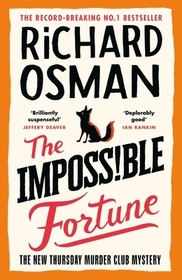
Deep History, Climate Change, and the Evolution of Human Culture
Sorozatcím: Elements in Environmental Humanities;
-
20% KEDVEZMÉNY?
- A kedvezmény csak az 'Értesítés a kedvenc témákról' hírlevelünk címzettjeinek rendeléseire érvényes.
- Kiadói listaár GBP 18.00
-
8 599 Ft (8 190 Ft + 5% áfa)
Az ár azért becsült, mert a rendelés pillanatában nem lehet pontosan tudni, hogy a beérkezéskor milyen lesz a forint árfolyama az adott termék eredeti devizájához képest. Ha a forint romlana, kissé többet, ha javulna, kissé kevesebbet kell majd fizetnie.
- Kedvezmény(ek) 20% (cc. 1 720 Ft off)
- Kedvezményes ár 6 880 Ft (6 552 Ft + 5% áfa)
Iratkozzon fel most és részesüljön kedvezőbb árainkból!
Feliratkozom
8 599 Ft

Beszerezhetőség
Becsült beszerzési idő: A Prosperónál jelenleg nincsen raktáron, de a kiadónál igen. Beszerzés kb. 3-5 hét..
A Prosperónál jelenleg nincsen raktáron.
Why don't you give exact delivery time?
A beszerzés időigényét az eddigi tapasztalatokra alapozva adjuk meg. Azért becsült, mert a terméket külföldről hozzuk be, így a kiadó kiszolgálásának pillanatnyi gyorsaságától is függ. A megadottnál gyorsabb és lassabb szállítás is elképzelhető, de mindent megteszünk, hogy Ön a lehető leghamarabb jusson hozzá a termékhez.
A termék adatai:
- Kiadó Cambridge University Press
- Megjelenés dátuma 2022. szeptember 8.
- ISBN 9781009257336
- Kötéstípus Puhakötés
- Terjedelem80 oldal
- Méret 228x152x5 mm
- Súly 140 g
- Nyelv angol 285
Kategóriák
Rövid leírás:
Two million years of climate change have driven evolution, migrations and cultural development from Homo erectus to modern humans.
TöbbHosszú leírás:
This Element follows the development of humans in constantly changing climates and environments from Homo erectus 1.9 million years ago, to fully modern humans who moved out of Africa to Europe and Asia 70,000 years ago. Biosemiotics reveals meaningful communication among coevolving members of the intricately connected life forms on this dynamic planet. Within this web hominins developed culture from bipedalism and meat-eating to the use of fire, stone tools, and clothing, allowing wide migrations and adaptations. Archaeology and ancient DNA analysis show how fully modern humans overlapped with Neanderthals and Denisovans before emerging as the sole survivors of the genus Homo 35,000 years ago. Their visions of the world appear in magnificent cave paintings and bone sculptures of animals, then more recently in written narratives like the Gilgamesh epic and Euripides' Bacchae whose images still haunt us with anxieties about human efforts to control the natural world.
TöbbTartalomjegyzék:
Who Are We?; Life Emerges; Hominin Emergence; Homo Sapiens Appears; Monumental Architecture, Towns, and Cultural Separation from Wildness; Conclusion.
Több












